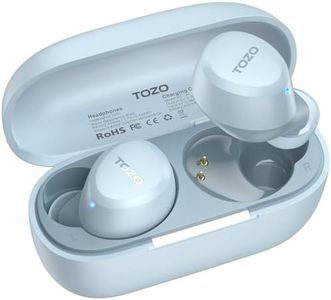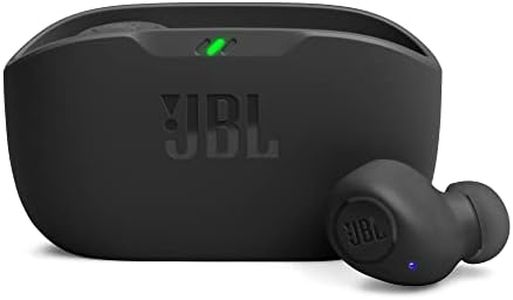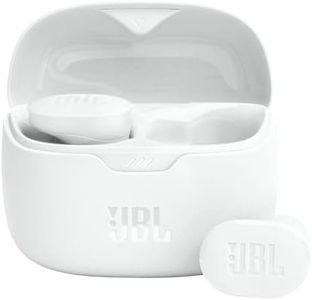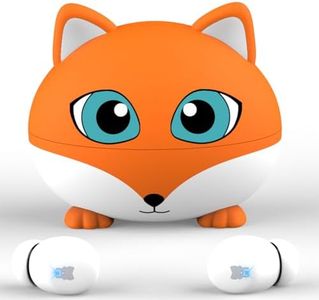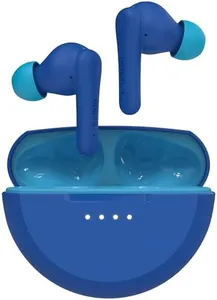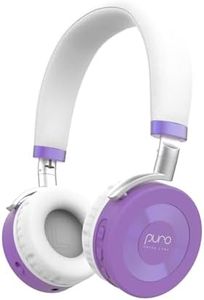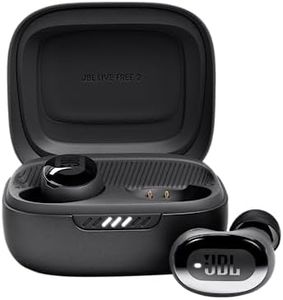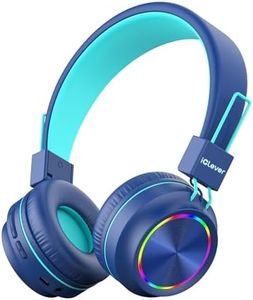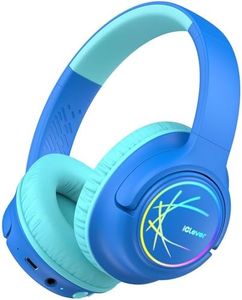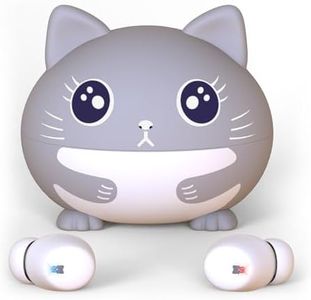We Use CookiesWe use cookies to enhance the security, performance,
functionality and for analytical and promotional activities. By continuing to browse this site you
are agreeing to our privacy policy
10 Best Kids Earbuds
From leading brands and best sellers available on the web.Buying Guide for the Best Kids Earbuds
Choosing kids' earbuds is about finding a balance between safety, comfort, and sound quality. Children have more sensitive hearing than adults, so it's very important to make sure the earbuds are both safe to use and comfortable for long periods. Think about where your child will use them—at home, on trips, or for schoolwork—and how durable they need to be for everyday handling.Volume LimitingVolume limiting refers to a feature that keeps the earbuds from getting too loud. This is important because children's ears are more sensitive and high volumes can cause hearing damage over time. Usually, volume-limited earbuds are set to cap the sound at about 85 decibels. Some may let you disable or adjust this cap, but it's safest to keep it on. If your child will be using the earbuds in quiet places, basic volume limiting is perfect. But if you'll be in a noisy setting like travel, look for ones that keep the sound clear but still don't go above the safe limit.
Fit and ComfortFit and comfort are all about making sure the earbuds sit easily in your child's ears and don't cause pain after wearing them. Many kids' earbuds come with smaller ear tips and lightweight designs built for smaller ears. Some even offer different sizes of ear tips to help you find the best fit. Think about your child's age and the size of their ears. If your child is very young, go for the smallest tips or models designed for toddlers. Check if the earbuds are soft and lightweight, and if possible, let your child try them to see what feels best.
DurabilityDurability describes how well the earbuds stand up to active use and possible accidents like drops or tugs on the cord. Kids often handle their gear a bit roughly, so sturdier materials and reinforced cords are very useful. Some earbuds are also water- or sweat-resistant, making them good for sports or outdoor use. If your child tends to be hard on their belongings, look for options that mention strong cables, flexible designs, or special coatings. For careful users, this may be less crucial, but usually, a tough pair will last longer.
Wired vs. WirelessChoosing between wired and wireless means deciding if you want earbuds that connect with a cable or use Bluetooth. Wired earbuds don't need charging and can be plugged right into many devices, but the cord can get tangled or caught. Wireless earbuds are convenient and cable-free, which many kids find easier to handle, but they do need to be recharged and can be easier to lose. If your child will be wearing earbuds for long periods without easy charging, wired could be better. If freedom of movement and avoiding tangled cords is most important, wireless is likely the way to go. Think about your child's habits and which style fits your family best.
MicrophoneA microphone lets your child talk on calls, use voice chat in games, or participate in online classes. Some kids' earbuds include a built-in mic, which can be useful for school or staying in touch with family and friends. If your child just wants to listen to music or watch videos, a microphone isn't necessary. But for kids who are likely to take calls or use voice features, look for models that highlight a clear, simple-to-use microphone.
